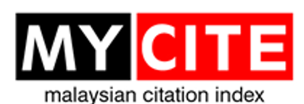Abstracted and indexed in:

Future:


A PROPOSAL IN HAVING A CYBER RESILIENCE STRATEGY FOR THE CRITICAL NATIONAL INFORMATION INFRASTRUCTURE SECTORS IN MALAYSIA
Noor Azwa Azreen Binti Abd. Aziz, Dr. Nur Diyana Binti Kamarudin, Muhamad Zaim Bin Mohd. Rozi & Mohd Ridzuan Bin M Shariff
The environment today is much more complex and riskier, hence, traditional cybersecurity measures are insufficient. Cybersecurity prevention measures are no longer a solution. Cyber-attacks might have already occurred without being realised and by then the damage has already been done. In this regard, it is best to assume that cyber threats and cyber-attacks will eventually break through defences.
OIC-CERT 5G Security Framework
Hulk Zhang, Aloysius Cheang, Xiaoxin Gong & Yang Ming
OIC-CERT recognizes that 5G marks the beginning of a new era, and at the same time bringing in cybersecurity challenges to a successful 5G transformation. Thus, to effectively and timely address some of these challenges through a holistic way, according to the philosophy of both zero trust and team sports OIC-CERT has established the OIC-CERT 5G security framework as a foundation to demystify and simplify the journey of 5G adoption for OIC nation states where security is no compromise.
NEW TYPES OF DOS/DDOS ATTACKS REQUIRE ALTERNATIVE APPROACHES TO SECURITY
Rashad Aliyev & Tural Mammadov
This study examined cases where a system completely crashes when a user sends 2–3 DoS requests per second. The aim of these attacks is to find weak code or incorrect settings in the system. The research highlights the inadequacy of providing protection only at code and server levels or with security equipment, especially in critical infrastructures and dedicated networks.
A COMPREHENSIVE RECONSIDERATION OF CLOUD SECURITY APPROACH
Dr.Mohamed Hamad Al Kuwaiti & Talal M. Al Kaissi
With rapidly growing migration of business, computation and data into the cloud, cloud security is no longer a new topic and is increasingly playing a more critical role in digital transformation. However, with increasing severe cloud security incidents grabbing the headlines recently, it has become imperative that we need to reconsider how to secure the cloud more effectively based on principles about secure-by-design, and zero trust.
INCIDENT RESPONSE PRACTICES ACROSS NATIONAL CSIRTS: RESULTS FROM AN ONLINE SURVEY
Sharifah Roziah Mohd Kassim, Shujun Li & Budi Arief
The aim of this study is to obtain operational insights of real-world practices across national CSIRTs, concerning cyber incident reporting channels, ticketing tools, incident classification schemes, and ways to identify appropriate responses.
STUDY OF LOKIBOT INFECTION AGAINST INDONESIAN NETWORK
Ariani, Siti Rahmawati & Rudi Lumanto
Of the many types of malware that need attention is malware that causes data leakage, one of which is Lokibot. In 2021, we observed that malware attacks also occurred massively on the Indonesian internet network. Among the types of malware in those attacks, Lokibot was the most significant
BUILDING A DYNAMIC CLOUD-BASED SNORT NIDS: A JOURNEY OF “MATA GARUDA” NETWORK INTRUSION MONITORING DEVELOPMENT IN INDONESIA
Ferry Astika S., Fadhil Yori, Ikbar Maulana, Dimas R, Ahmada Y, M. Alfiyan, Andri S, Novi Turniawati, Dani Ramdani, Taufik Y, Muhammad Salman, Kalamullah Ramli, Jauhari, Isbat & Iwan Syarif
Snort is one of the well-known signature-based network intrusion detection system (NIDS). In the typical NIDS architecture, the sensor placement must be in the same physical network and the defence centre that makes the deployment cost steep.